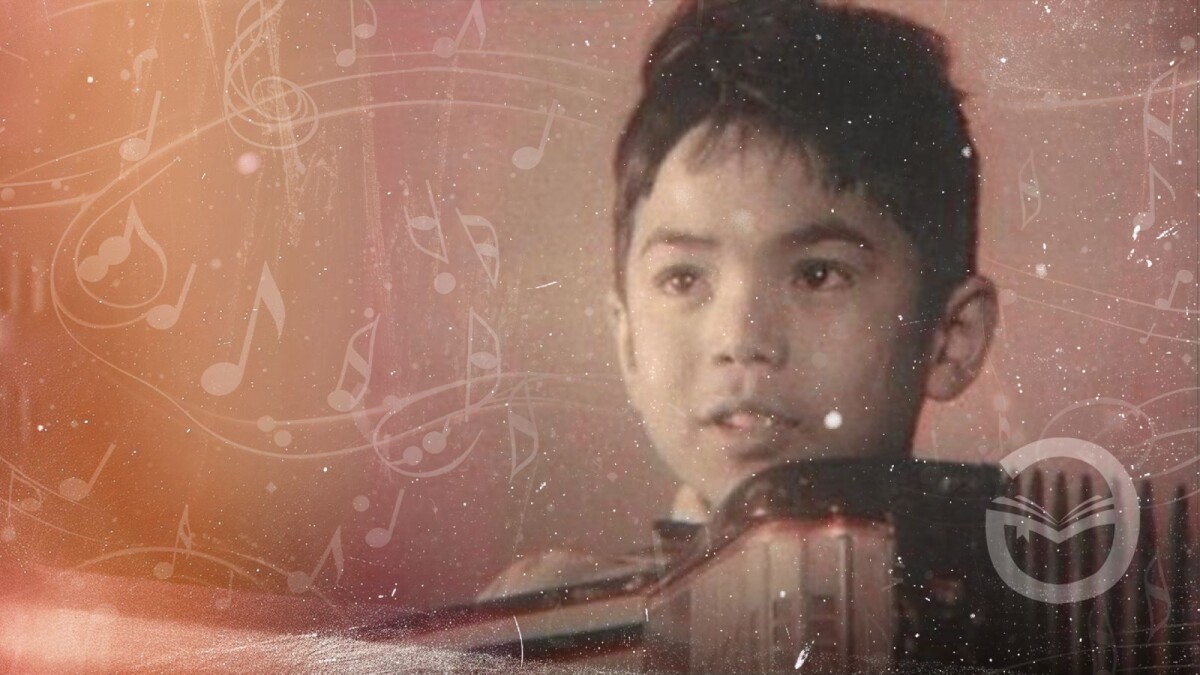What would you do during the longest breaks when you were in school? You were probably looking forward to having a leisurely lunch in the cafeteria or reviewing your homework? Or have you developed a habit of playing games and sharing secrets with classmates and friends? The school habit of the protagonist of the film “The Story of a Young Accordionist” cannot but surprise: every day, as soon as the bell rings, he rushes home to drink breast milk.
The feature film “The Story of a Young Accordionist” (in Kazakh: “Kozimnin Karasy” – “The apple of My Eyes”) stands out as one of director Satybalda Narymbetov's most remarkable works. Released to the public in 1994, it catapulted the director into global recognition within the cinematic sphere. At the 3rd All-Russian Film Festival "Kinoshok" in Anapa in 1994, Narymbetov received the prestigious award "for humanity and kindness," solidifying his status in the industry. Additionally, he garnered special prizes at international competitions held in Germany, France, and Latvia.
The film's success, lauded at such high levels, is attributed to its authenticity and its ability to portray the realities of adult life through the lens of a child. The main protagonist, a mischievous and brave young boy, embodies the essence of an ordinary village child aged nine or ten. Set in a post-war mining village in Southern Kazakhstan during the 1950s, the film captures the essence of life in that era.
Children's entertainment goes beyond just observing dance parties and fights. They also engage in activities such as learning to shoot a gun together. After offering their prized possessions to Zholdybai, they earn the opportunity to climb a pole and watch a short movie for 3-4 minutes. Zholdybai, experienced and discerning, doesn't appreciate simple things like a ball but gladly accepts photographs of a naked woman and "protective equipment."
Esken's journey of discovering the intricacies of adult life continues as he witnesses the secretive activities of the wealthy villagers and Aspasia Talalaevna. The depiction of the impoverished life in the Kazakh village after the war deeply impacts modern viewers. For instance, the seemingly humorous dispute between Esken's mother and their elderly neighbor over cow dung, shown in one of the film's early episodes, initially appears comical but reflects the village's dire state. The director's skill lies in not resorting to overtly pitiful dialogue to portray poverty; instead, he artfully depicts the challenges of turbulent times through humorous scenes that resonate with the film's context.
Although the main role in the film was played by a child, and the main events were conveyed through the eyes of children, we cannot say that this is a film for children. In fact, the picture is reminiscent of the famous film by Abdulla Karsakpaev “My name is Khozha”. The history of both works tells about rural life in the fifties of the last century. The main characters of both are naughty children. Although the themes that “Khozha” raises are understandable and interesting for adult people, we can attribute it to a real children's film. Because the main character takes a direct part in the events taking place there, and the same plots reveal Khoja’s psychological portrait. And some episodes of the picture, which is based on our conversation, children may not understand. Because in the events of rural life that take place here every day, the child participates only as an observer, and not as actors. Therefore, some scenes from the film are not suitable for young audiences. In our opinion, this is a melodrama-picture for adults that makes adults travel back to their childhood. The director himself draws the main plot of this film from a story telling about his youth. His literary work was adapted from the film script by Iztule Izmagambetova. At first glance, the painting may seem like a light work that creates the illusion of bygone days. However, behind this warm memories is the desire of the writer-director to show childhood sadness, the crookedness of the system, the betrayal of a loved one.
It's worth noting that the film, shot in the last decade of the last century, authentically captures the post-war era. The commendable work of the production designer, led by the renowned director Rustem Abdrashev, is evident throughout. Additionally, Akhan Satayev, a prominent Kazakh film figure, began his cinematic journey portraying Idris in this film. The main role was portrayed by the talented young actor Daulet Taniev, with Bakhytzhan Alpeisov and Raykhan Aitkozhanova portraying his parents. The film's greatest achievement lies in its convincing and realistic performances.
In conclusion, we recommend taking a journey back to childhood by watching "The Story of a Young Accordionist" to experience rural life through the eyes of a child. The film introduces intriguing characters like Ermekbai, exiled to Barsakelmes, and Zholdybai, frustrated by his father's careless demeanor.
To copy and publish materials, you must have written or oral permission from the editorial board or the author. A hyperlink to the Adebiportal.kz portal is required. All rights reserved by the Law of the Republic of Kazakhstan "On Copyright and Related Rights". adebiportal@qcontent.kz 8(7172) 64 95 58 (in - 1008, 1160)
The opinion of the author of the article does not represent the opinion of the editorial board.









